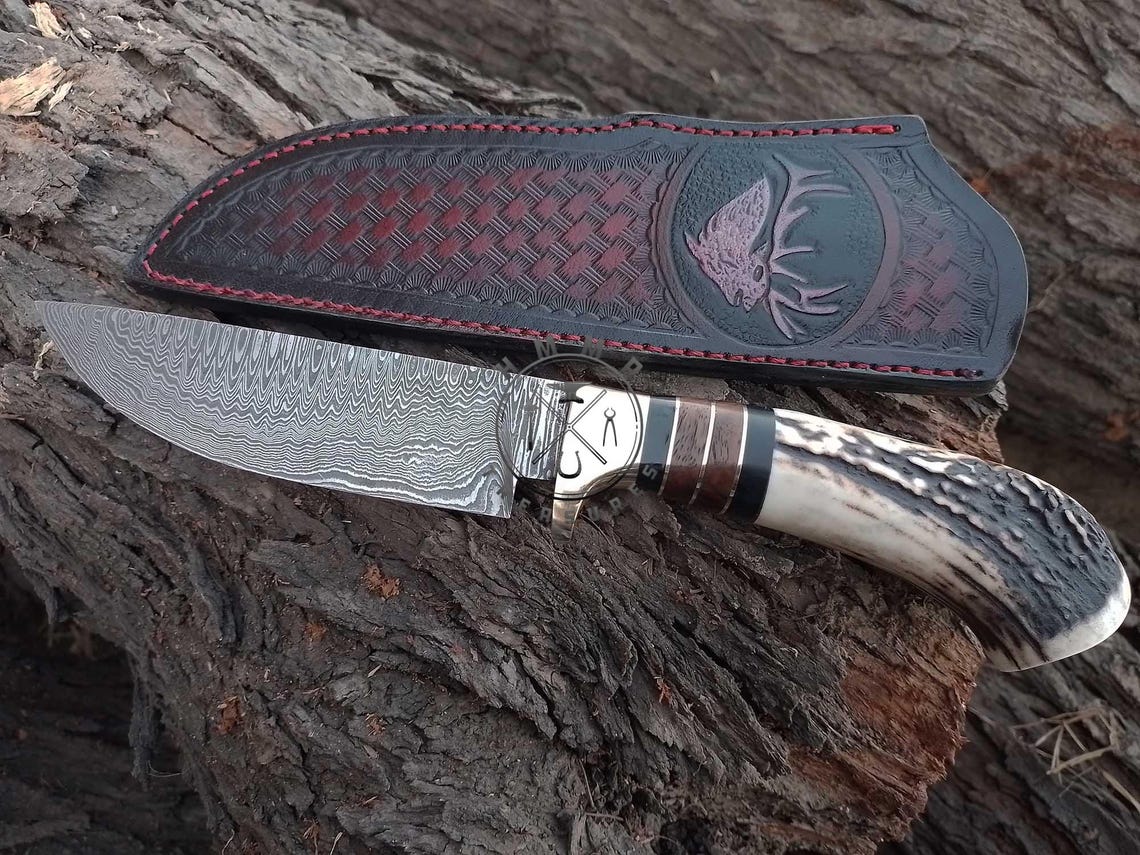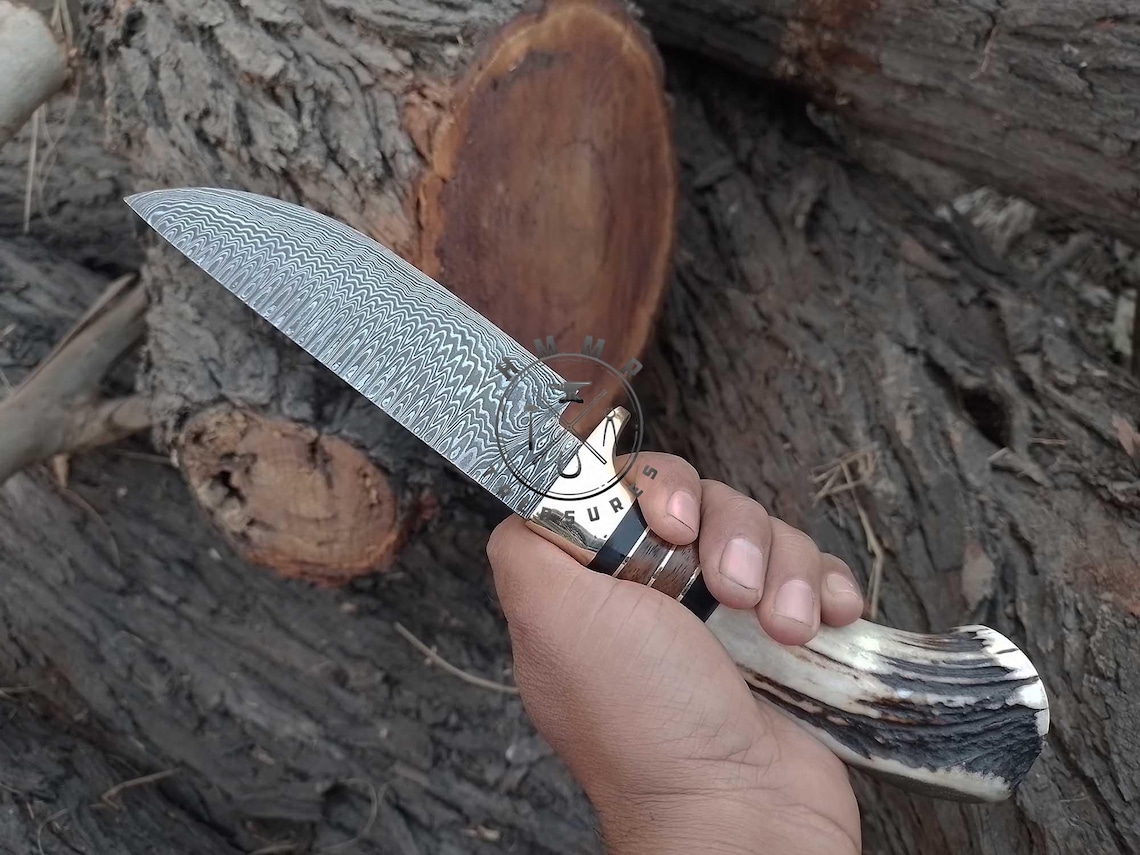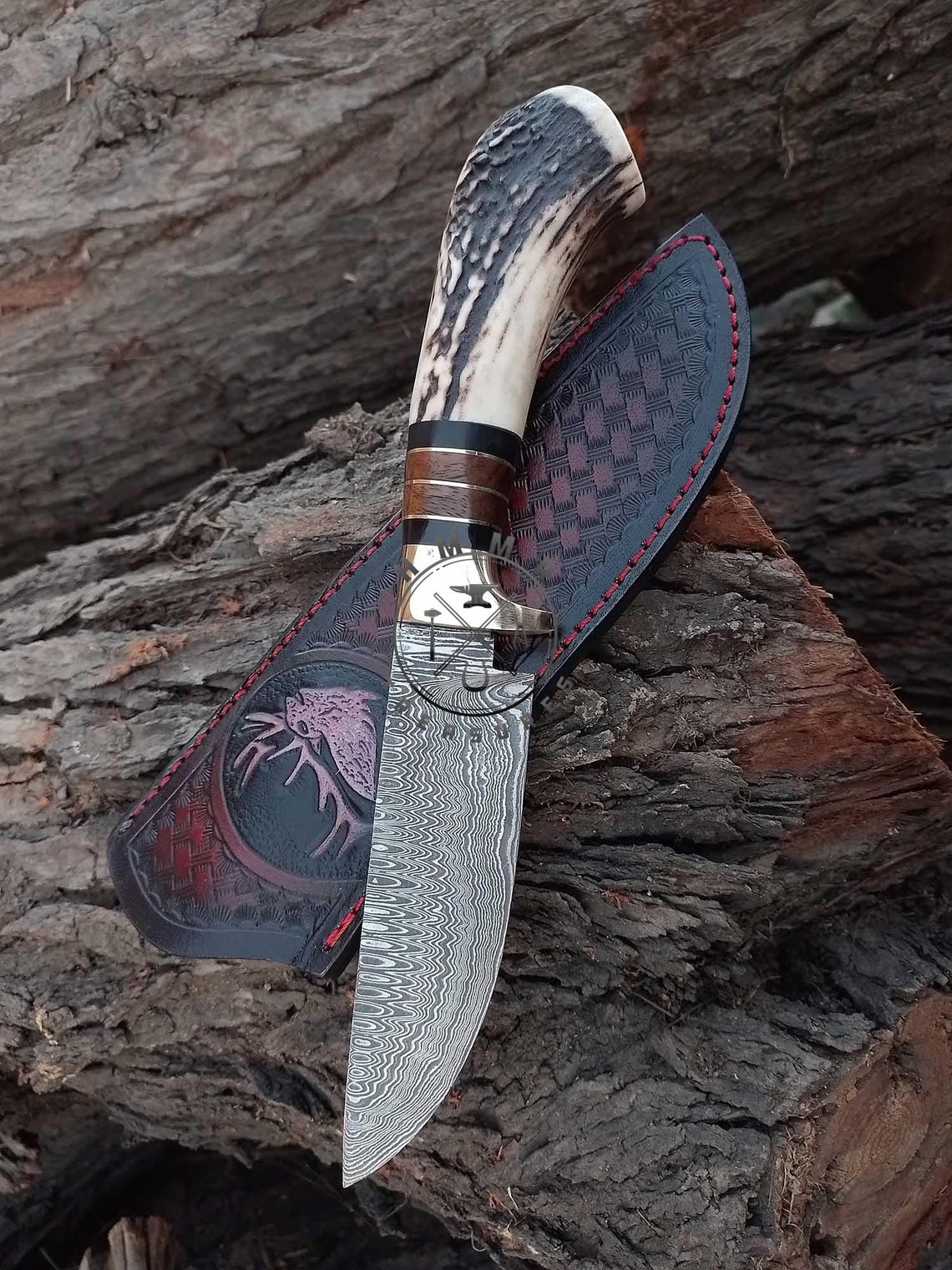
The glint of a polished blade, the swirling patterns of forged steel – for centuries, the Damascus Bowie Knife has captivated collectors, outdoorsmen, and historians alike. More than just a tool, it's a testament to ancient craftsmanship and a symbol of rugged American spirit. This isn't just any knife; it's a piece of art, a functional heirloom, and a blade steeped in a rich and storied past. If you've ever held one, you know the feeling – a weight in your hand that speaks of strength, and a beauty that tells a story of fire, hammer, and relentless skill.
The name "Damascus" itself evokes a sense of mystery and power. It harks back to the Crusades, when European knights first encountered blades of legendary sharpness and resilience, said to be forged in the ancient city of Damascus. These blades were so sharp they could slice through a silk scarf in mid-air and so tough they could bend almost double without breaking. While the original secret of Damascus steel was lost to time, modern bladesmiths have painstakingly rediscovered and recreated the forging techniques that produce the distinctive watery patterns we see today.
The "Bowie" part of the name brings us closer to home. This iconic knife design, a large fighting and utility knife, is inextricably linked to the American frontier and the legendary figure of James "Jim" Bowie. His involvement in a deadly duel, where he used a large knife to defend himself, cemented the design's place in American folklore. The combination of these two legendary names – Damascus and Bowie – creates a knife that is both a historical artifact and a modern marvel.
The Art of Forging a Damascus Bowie Knife

Making a Damascus Bowie Knife is a labor of love, a process that demands both artistry and precision. It begins with layers of two or more different types of steel, each with its own unique properties. These layers are stacked together and then heated in a forge until they are white-hot. The bladesmith then begins a series of folding and hammering, a rhythmic dance of fire and steel. With each fold, the number of layers doubles, creating the intricate patterns that are the hallmark of Damascus steel.
This process, known as pattern welding, is what gives the blade its strength and unique aesthetic. One steel might be a high-carbon steel, providing a razor-sharp edge, while the other might be a softer, more flexible steel, adding durability and toughness. The result is a blade that possesses the best of both worlds: a hard, sharp edge that holds its keenness, and a resilient body that can withstand incredible stress. It's this combination of form and function that makes a high-quality Damascus steel Bowie knife so desirable.
The number of layers can vary dramatically, from a few dozen to hundreds, and each choice results in a different pattern. The final design is revealed only after the blade is finished, ground, and etched in an acid bath. This acid reacts differently with the various types of steel, highlighting the layers and bringing the mesmerizing patterns to life. It's a moment of truth for the bladesmith, a reveal that showcases the hours of painstaking work and reveals the blade's soul.
The Enduring Appeal of the Damascus Bowie Knife
There's a reason the Damascus Bowie Knife has remained a favorite among enthusiasts. Beyond its stunning appearance, it's a practical and versatile tool. Its size and shape make it ideal for a variety of tasks, from clearing brush and preparing a campsite to serving as a formidable self-defense tool. The broad blade provides leverage for chopping, while the sharp point is excellent for piercing. It's a knife that feels as comfortable in the hands of a seasoned hunter as it does in a collector's display case.
The craftsmanship extends beyond the blade itself. The handles of these knives are often made from beautiful and durable materials like exotic hardwoods, bone, or horn, each one carefully shaped and polished to fit the hand perfectly. The guard and pommel are also often made with meticulous detail, adding to the overall aesthetic and balance of the knife. A well-made Damascus Bowie Knife is a harmonious whole, where every element works together to create a piece that is both beautiful and highly functional.
Think about it: you're not just buying a knife; you're investing in a piece of history and a work of art. The hours of labor, the skill passed down through generations, the materials forged under extreme heat – all of this is contained within the blade. It's a tangible connection to the past, a link to the rugged pioneers and skilled artisans who shaped the world we live in. Owning one is a statement, a declaration of appreciation for quality, history, and the enduring power of human ingenuity.
How to Choose a Quality Damascus Bowie Knife
With so many options on the market, it can be tricky to know what to look for. When shopping for a Damascus Bowie Knife, the first thing to consider is the quality of the steel. Look for blades that are described as being forged from high-carbon and nickel steels, as this combination typically yields a strong, sharp, and durable blade with a beautiful pattern. Be wary of knives that are simply "acid etched" to mimic the look of Damascus steel without undergoing the genuine forging process. A true Damascus blade will have a visible texture and depth to the patterns, not just a surface-level design.
Next, pay attention to the handle and hardware. The handle should be securely attached and made from a durable material that feels good in your hand. Look for a full tang construction, where the steel of the blade extends all the way through the handle. This provides maximum strength and balance. The guard should be solid and well-fitted, protecting your hand from slipping onto the blade. And don't forget the sheath! A quality sheath, whether leather or Kydex, is essential for protecting both the knife and the user.
Finally, consider the reputation of the maker. Do some research, read reviews, and look for bladesmiths who are passionate about their craft. A reputable maker will be transparent about their materials and forging process and will stand behind the quality of their work. Investing in a high-quality Damascus Bowie Knife from a skilled artisan is a decision you won't regret. It's a tool that will last a lifetime and can be passed down to future generations, carrying with it not just the weight of its steel, but the weight of its history.
The Allure of the Bowie Knife: A Lasting American Icon
The Bowie knife, in all its forms, holds a special place in the American consciousness. It's the knife of explorers, pioneers, and frontiersmen. It represents self-reliance, courage, and a can-do attitude. When you combine this iconic design with the legendary steel of Damascus, you get a blade that is truly in a class of its own. It's a knife that commands respect, a tool that inspires confidence, and a work of art that captures the imagination.
The Damascus Bowie Knife is more than a cutting instrument. It's a bridge between the ancient world of pattern welding and the rugged individualism of the American West. It's a symbol of human perseverance and a testament to the fact that true craftsmanship is timeless. Whether you're a serious collector or someone looking for a dependable and beautiful knife for outdoor adventures, a Damascus Bowie knife is a choice that speaks volumes about your appreciation for quality and history. You’re not just holding a knife; you’re holding a legacy.
 here
here